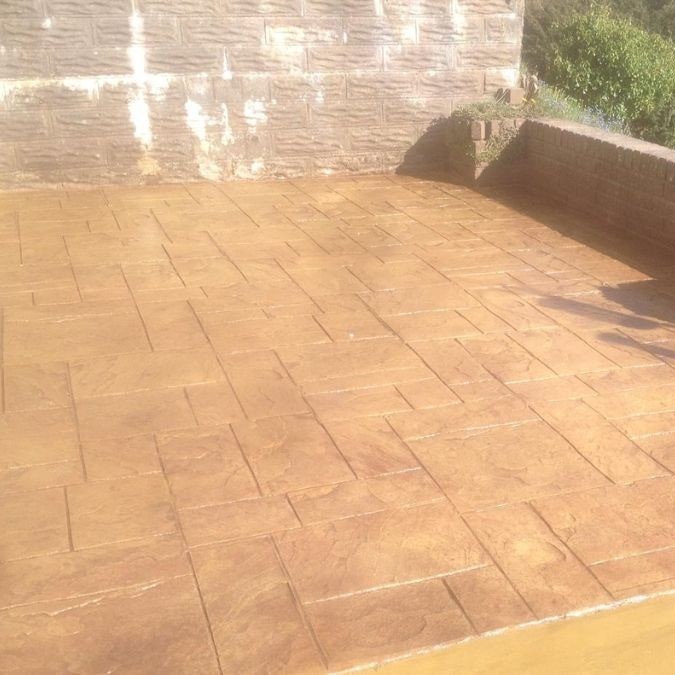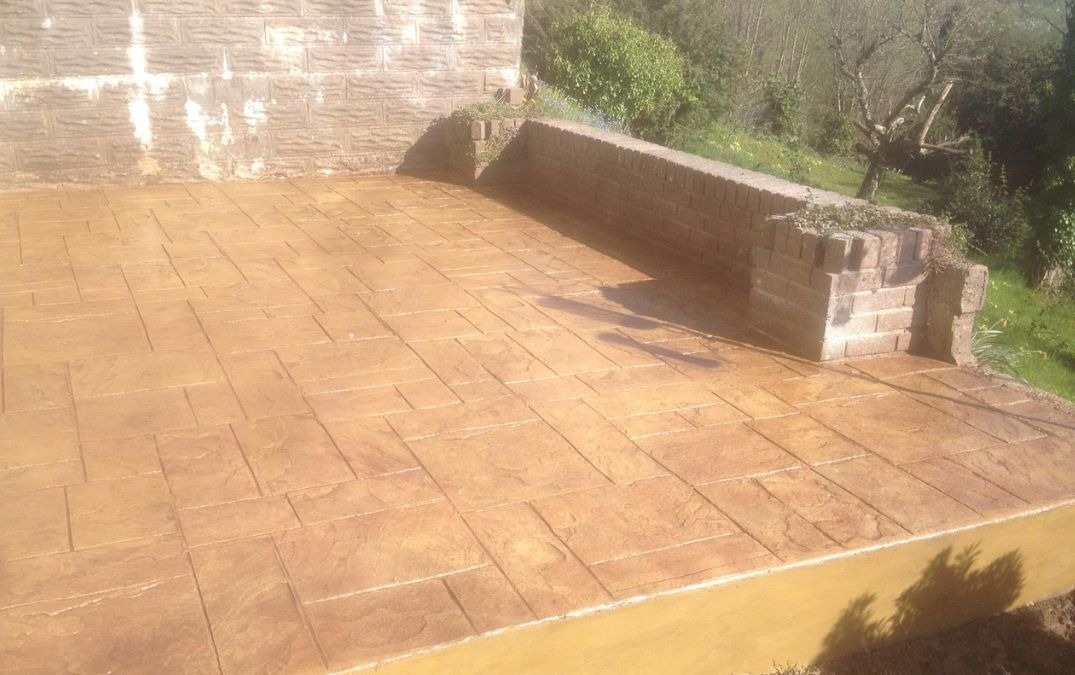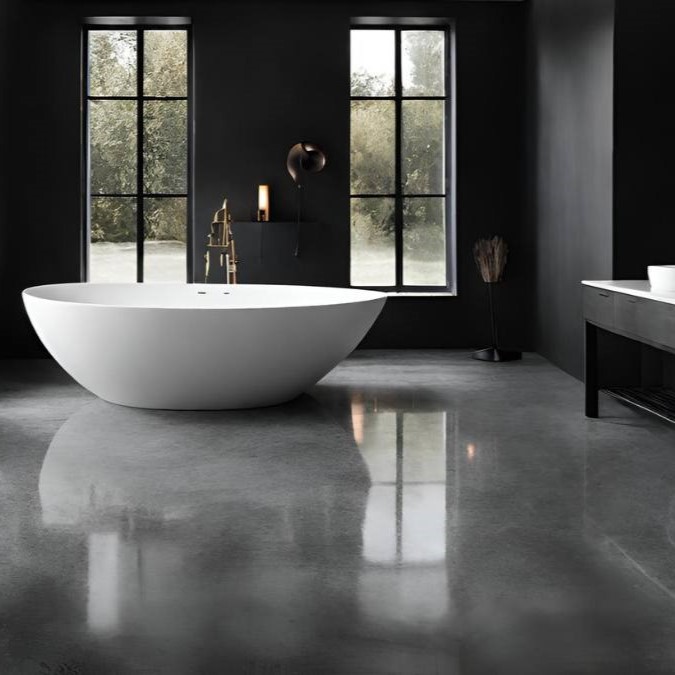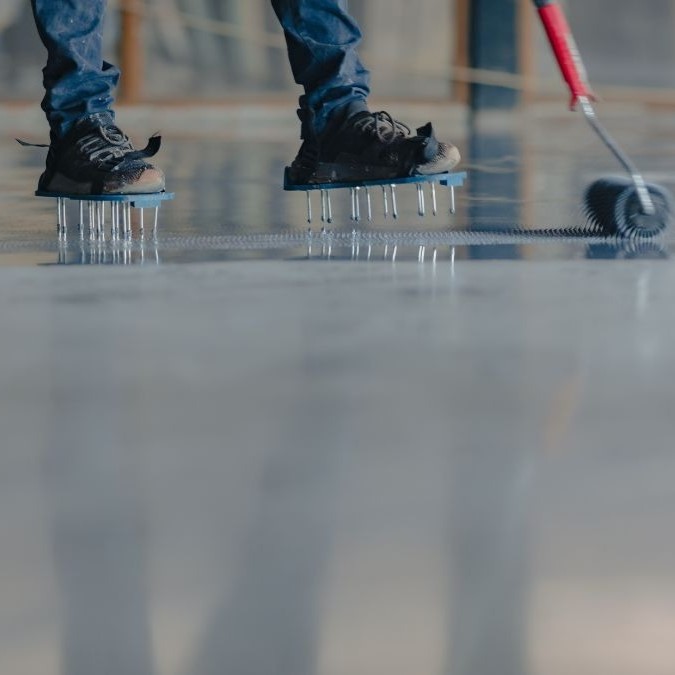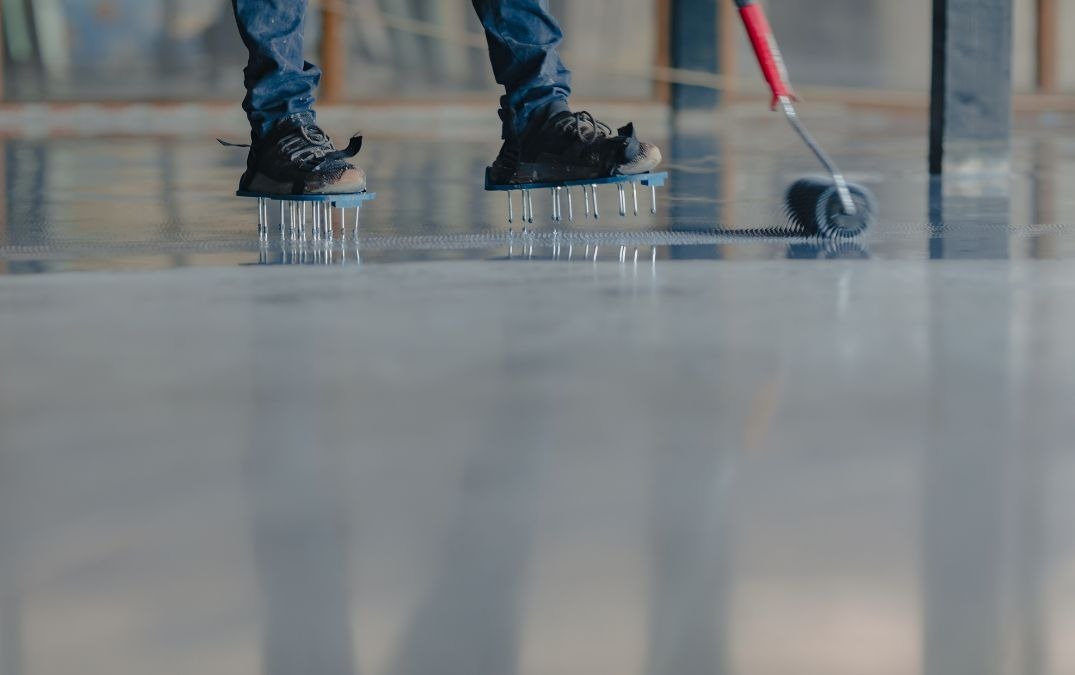Power floated
A power-floated concrete floor finish is characterized by its smooth, dense, and durable surface, making it a popular choice for commercial, industrial, and large residential projects. This type of finish offers a professional, polished look that is easy to clean and maintain, enhancing both the strength and durability of the concrete surface.
After pouring, the concrete is left to set initially until it can support the weight of the power float machine without deforming. This stage is known as the "bleed water" stage, during which excess water rises to the surface and evaporates. Once the concrete is ready, a power float (or power trowel) machine with large rotating blades is used to finish the surface. The machine is operated over the semi-hardened concrete, with the blades rotating at high speeds to smooth and compact the surface. The power floating process involves multiple passes. The first pass uses floating blades to even out any high spots and fill in low spots, creating a level surface. Subsequent passes employ trowel blades to further refine the surface, achieving a smoother and denser finish with each pass. In the final stages, the power trowel's blades are set at a steeper angle to burnish the surface, producing a highly compacted and smooth finish. The number of passes and the timing are crucial and depend on specific conditions like the type of concrete mix, ambient temperature, and humidity levels.


